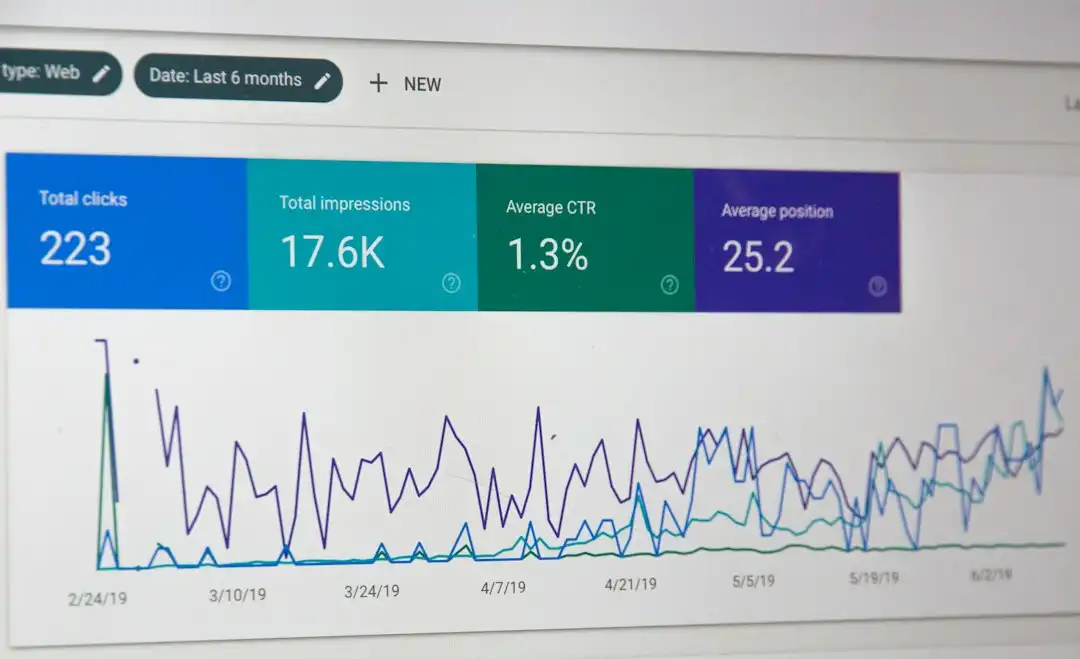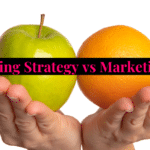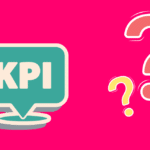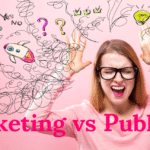In the fast-paced world of business and marketing, staying ahead of the game is essential. Two concepts that have emerged in this environment are legacy marketing and new wave marketing.
Both aim to drive sales and brand loyalty, but they go about it in different ways.
So what’s the difference?
Legacy marketing relies on established practices and traditions to connect with consumers. It is grounded in proven strategies and long-term relationships with customers. New wave marketing, on the other hand, is all about innovation and adaptability. It is constantly evolving to meet the demands of a changing market and new consumer trends.
This article will provide an in-depth comparison of the two marketing styles, examining their benefits and drawbacks, and help you determine which approach is right for your business.
So, whether you’re a traditionalist who values stability and long-term relationships or a trailblazer who thrives on innovation and change, read on to discover which marketing approach will help you succeed!
Firstly, let’s clarify what we are dealing with here.
What is Legacy Marketing?

Legacy marketing is a traditional marketing approach that focuses on established practices and long-term relationships with customers. It values stability, consistency, and the proven success of past strategies.
This marketing style is rooted in the idea that “if it ain’t broke, don’t fix it.” It is a time-tested approach that has been honed and refined over the years, and it continues to be effective in reaching and engaging consumers.
Let’s let the main principles.
Principles of Legacy Marketing

Stability and tradition: Legacy marketing is built on a foundation of proven strategies and time-honored practices. It values stability and consistency, aiming to maintain strong, enduring relationships with customers.
Brand loyalty: This approach prioritizes building and maintaining brand loyalty. It focuses on long-term relationships with customers, rather than quick sales or short-term gains.
Customer relationships: Legacy marketing values the personal touch. It emphasizes the importance of understanding and connecting with customers on a deeper level, often through face-to-face interactions or personalized communication.
Proven success: This approach relies on past success to guide future strategies. It places a strong emphasis on data and analytics to inform decision-making and ensure that marketing efforts are effective.
I know what you’re thinking, “I get it, but how is it done?”.
Well, let’s discuss some time-tested techniques.
Techniques of Legacy Marketing

Print advertising: This includes newspaper and magazine ads, brochures, flyers, and direct mail. Print advertising has a long history and continues to be a valuable tool for reaching specific demographics.
TV and radio commercials: Traditional media like television and radio have been used for decades to reach mass audiences. Legacy marketing recognizes the enduring power of these channels.
Billboards and signage: Out-of-home advertising, such as billboards and storefront signage, is a tangible and often local way to reach potential customers.
Trade shows and events: Face-to-face interactions at trade shows and events allow businesses to showcase their products and services and connect with potential customers in a more personal way.
As you now know, legacy marketing is old school; it’s what our parents and our parents, parents, and our parents, parents, parents (ok, I’ll stop there) know as marketing.
So, what are the advantages of it?
The Advantages of Legacy Marketing

Stability: Legacy marketing offers a stable and predictable approach. It is based on proven strategies and a deep understanding of the market, which can provide a sense of security for businesses.
Long-term relationships: By focusing on building and maintaining strong, long-term relationships with customers, legacy marketing can lead to greater brand loyalty and repeat business.
Personal touch: This approach allows for more personal and direct interactions with customers, which can foster a sense of trust and connection.
Established success: Legacy marketing has a track record of success. It relies on data and analytics to inform decisions, ensuring that marketing efforts are effective and efficient.
But there are two sides to every coin, my friends. Let’s acknowledge some of the potential disadvantages here, too.
The Disadvantages of Legacy Marketing
Limited reach: Legacy marketing may not be as effective at reaching younger or more tech-savvy audiences who are more likely to be online or using social media.
Slow to adapt: Because legacy marketing is based on established practices, it may be slower to adapt to changes in the market or new trends.
Resource-intensive: Some legacy marketing techniques, such as print advertising or trade shows, can be costly and time-consuming.
Less targeted: Traditional marketing techniques may not be as precise in reaching specific demographics or niche audiences.
Now, let’s get all modern!
What is New Wave Marketing?
 New wave marketing is a modern and innovative approach that is constantly evolving to meet the demands of a changing market and new consumer trends. It is all about staying ahead of the curve and adapting to new technologies and methods as they emerge.
New wave marketing is a modern and innovative approach that is constantly evolving to meet the demands of a changing market and new consumer trends. It is all about staying ahead of the curve and adapting to new technologies and methods as they emerge.
This marketing style is grounded in the idea that “change is the only constant.” It embraces new ideas, new platforms, and new ways of reaching and engaging consumers.
Now, let’s check out some of the key principles.
Principles of New Wave Marketing

Innovation and adaptability: New wave marketing is all about embracing change and staying ahead of the curve. It values innovation and is constantly evolving to meet the demands of a dynamic market.
Digital focus: This approach recognizes the power of digital marketing. It prioritizes online platforms and techniques, such as social media, email marketing, and search engine optimization (SEO).
Data-driven decision-making: New wave marketing relies on data and analytics to inform decision-making. It uses metrics to measure the success of campaigns and make adjustments in real-time.
Agility: This approach emphasizes the ability to respond quickly to new opportunities or challenges. It values flexibility and adaptability in marketing strategies.
So, what are the core new wave marketing techniques? Let us explain.
Techniques of New Wave Marketing

Social media marketing: New wave marketing recognizes the importance of social media platforms like Facebook, Instagram, and Twitter. It uses these channels to reach and engage with a wide audience.
Content marketing: Creating valuable and relevant content, such as blog posts, videos, or infographics, is a key technique in new wave marketing. It aims to provide information that consumers find useful and shareable.
Influencer marketing: Collaborating with influencers or industry experts can help new wave marketing reach a larger and more targeted audience.
Email and automation: Email marketing is a key tool in new wave marketing, and it often incorporates automation to deliver personalized and timely messages.
The Advantages of New Wave Marketing

Innovation: New wave marketing is constantly evolving, allowing businesses to stay ahead of the curve and take advantage of the latest trends and technologies.
Wider reach: This approach can be highly effective at reaching younger, more tech-savvy audiences who are more likely to be online or using social media.
Cost-effective: Many new wave marketing techniques, such as social media or email marketing, can be more affordable than traditional methods.
Highly targeted: New wave marketing is often more precise in reaching specific demographics or niche audiences, thanks to the use of data and analytics.
The Disadvantages of New Wave Marketing

Constant change: New wave marketing can be challenging to keep up with, as it requires businesses to constantly adapt to new technologies and methods.
Short-term focus: The focus on new trends and technologies may mean that some new wave marketing efforts are more short-term or faddish in nature.
Digital overload: The emphasis on digital marketing can lead to information overload for consumers, making it harder for businesses to stand out.
Lack of personal touch: Some new wave marketing techniques, such as email or automation, may not provide the same level of personal connection with customers as legacy marketing does.
Now, how do they compare?
Legacy Marketing vs New Wave Marketing
As we’ve explored in this article, legacy marketing and new wave marketing are two distinct approaches to reaching and engaging consumers.
Each has its own set of principles, techniques, and advantages.
So, which way do you go? What’s the next more? What is right for you and your business?
Well, only you and a little reflection can really answer that, but hopefully the below will help too.
Which Approach is Right for You?
Choosing the right approach for your business depends on a variety of factors, including your target audience, industry, and goals.
Legacy marketing may be a good fit if you value stability, have a well-established customer base, and are in an industry where traditional marketing techniques are still highly effective.
New wave marketing could be the better choice if you want to stay ahead of the curve, are targeting a younger or more tech-savvy audience, or are in an industry where digital marketing is essential.
Can They Coexist?
The good news is that you don’t necessarily have to choose one over the other. In fact, many businesses find success by combining elements of both approaches. This can create a well-rounded marketing strategy that leverages the strengths of each style.
For example, a business might use legacy marketing techniques like print advertising or trade shows to maintain strong relationships with existing customers.
Furthermore, they can also incorporate new-wave marketing strategies like social media or content marketing to reach new and younger audiences and further reinforce their branding.
Our Final Little Summary
In the ever-changing landscape of marketing, it’s essential to stay informed about the latest trends and techniques.
So, whether you lean towards the stability and tradition of legacy marketing or the innovation and adaptability of new wave marketing, understanding the principles and advantages of each can help you make informed decisions about your marketing strategy.
Remember, the key to success lies in finding the right balance for your business.
By incorporating elements of both approaches and staying open to new ideas, you can create a marketing strategy that is effective, efficient, and tailored to your specific needs.
Want to be a marketing superhero? The clip below is a “must watch”.
Happy Marketing!
Frequently Asked Questions

What are the main differences between legacy and new wave marketing?
Legacy marketing is traditional and focuses on stability, proven strategies, and long-term relationships with customers. It values personal connections and is often less reliant on digital technology.
On the other hand, new wave marketing is modern and emphasizes innovation, adaptability, and digital platforms. It is data-driven, often more cost-effective, and is focused on reaching younger, tech-savvy audiences.
How does legacy marketing compare to digital marketing?
Legacy marketing is a broader term that encompasses traditional marketing techniques, which may or may not include digital marketing.
Digital marketing, on the other hand, specifically refers to marketing efforts that use digital platforms and technologies, such as social media, email, and online advertising.
While some aspects of legacy marketing may include digital elements, the primary distinction is that legacy marketing can also involve non-digital methods, such as print advertising or in-person events.
What are some examples of legacy marketing?
Examples of legacy marketing include print advertising (newspapers, magazines, direct mail), radio and television commercials, billboards, trade shows, and in-person events.
These techniques have been used for many years and are considered traditional or “legacy” methods of reaching and engaging with consumers.
How is legacy marketing adapting to the digital age?
As the digital age has evolved, legacy marketing has adapted by incorporating digital elements into its traditional techniques. For example, print advertising may now include QR codes that lead to online content, or radio and television commercials may direct viewers to websites or social media platforms.
Additionally, legacy marketing efforts have also become more data-driven, using analytics to measure the success of campaigns and make informed decisions.
What is the future of legacy marketing?
The future of legacy marketing will likely continue to involve a blend of traditional and digital techniques, as businesses strive to reach a diverse audience with varying preferences.
While digital marketing is growing in importance, legacy marketing will remain relevant for certain demographics and industries. The key for the future of legacy marketing is adaptability and the willingness to embrace new technologies and methods.










